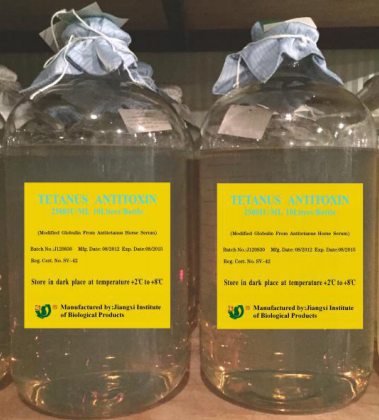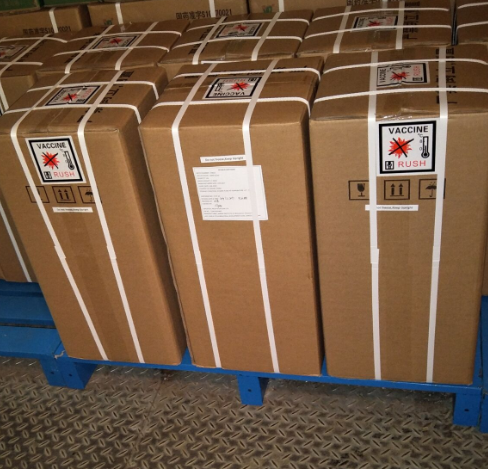Zhongyan 988 tomato winter sorghum cultivation technology
(1) Variety selection Selection of species: Chinese Academy of Sciences 988, Chinese Academy of Sciences 968. The above varieties are currently better greenhouse species in Changchun Shuangyang District. (2) Nursery The sowing time for planting seedlings in winter and spring is about November 20, and a shed nursery area is about 3-4 square meters. The tomato seed is small, about 30 grams per mu. The surface of tomato seeds can be affiliated with pathogenic bacteria such as leaf mildew, early blight, and viral diseases, and seed disinfection should be performed before sowing. After soaking in 1.5% formalin for 30 minutes and using a wet towel for 30 minutes, rinse the solution with warm water at 52°C for 20 minutes, and remove it for 4 to 5 hours with clear water. The treated seeds were germinated at about 28°C. During the germination process, the seeds were turned upside down and rinsed with water one or two times a day to ensure that the buds were in order. Most seeds can be sown when they break. After sowing, the seedbeds were covered with plastic film, kept warm, kept moist, kept at room temperature during the day at 25 to 28°C, and at night not less than 20°C, and emerged after about 7 to 8 days. After more than 70% of the seedlings emerged, the film was lifted and ventilated. After leaving the seedlings, they were kept at room temperature during the day and 20°C to 25°C during the day and 12°C at night to prevent overextension of the hypocotyls to form tall plantlets. The second true leaf can be divided into seedlings when it emerges, and the seedlings are too late to affect the flower bud differentiation of seedlings. The sub-seedlings are selected in the sunny morning. The seedbeds should be prepared in advance and be prepared with nutritious soil. Disinfection should be carried out with 50% carbendazim. When the seedlings are divided, they should be raised with soil to prevent root damage. In the process of seedling separation, strong seedlings should be selected to eliminate weak seedlings, diseased seedlings and deformed seedlings. Sub-seedlings are made of 6-8 cm plastic nutrients. Each shed requires 2 stoves for warming. It is maintained at 25-28°C during the day and 15°C at night. When a new leaf grows near the growth point, it indicates that the seedlings have been reduced. The bed temperature should be lowered appropriately. The temperature should be 20-25°C during the day, 12-13°C during the night, and the ground temperature should be about 20°C. By controlling temperature, light, water and fertilizer, and ventilation, the growth rate of seedlings can be controlled and strong seedlings can be cultivated. 5 to 7 days before planting, move the plastic nutrient to the position to suppress the growth of the seedlings. At this time, it is necessary to carry out low-temperature hardening of seedlings, during the day, 16 to 18°C, and at night at 10°C or more. The tomato seedlings planted in winter and spring are about 65-70 days old. The standard for strong seedlings is 20-25 cm in plant height, 6-7 leaf blades with thick leaves, shiny leaves, thick stems, short internodes, and slightly purple. Many hairs, white roots, thick roots. (3) Colonization Time January 25 - February 1. The colonization was carried out by using a wide and narrow row of ridged plastic film covering 80 cm wide, 50 cm narrow rows, 25-30 cm spacing, and 3500 mu leaves. Or 80 cm single frame cultivation, 22 cm spacing, 3,500 Mu left seedlings. The manure is not applied to the manure, and the manure is applied once after the end of winter and spring (the number is described in autumn and winter). Base fertilizer Each shed uses 25 kg of refined chicken manure, 25 kg of compound fertilizer (excluding chlorine), 1 kg of zinc sulfate, 1 kg of magnesium sulfate, and 25 kg of calcium fertilizer. In winter and spring, when the temperature of tomatoes is low when planting colonies, planting methods using dark water and stable seedlings should be adopted. The planting depth should be slightly lower than that of the buckwheat noodles, and the seedlings of the hypocotyls can be slightly deeper when planting. (4) Management after planting 1Temperature management After the colonization, try to increase the room temperature, keep the temperature at 28~30°C during the day, keep the temperature at least 10°C at night, and keep the temperature at 30°C. After easing the seedlings, the temperature should be 20-25°C during the day and 10°C or more during the night. 2 light tomato is hi light crops, requires a higher light intensity, especially in the morning to meet the light intensity. Winter and spring pods have a short duration of light in the growing season and have a weak intensity. In particular, attention should be paid to increasing the light intensity. To cultivate tomato, it is necessary to use a new, PVC-free, light-transmitting film with good light transmission properties, and timely remove the firewood and adsorbed dust on the membrane. Timely exposing the curtains and other heat preservation materials to extend the lighting time as much as possible, and see as much light as possible in the rainy and snowy days. Pruning in time to adjust the illuminance between the rows of plants. 3 water and fertilizer management after planting to flowering and fruiting before the strong seedling stage. After the plants are rejuvenated, they should be poured in a timely manner and the amount of water should not be too large. The seedlings end when the first fruit is large. Tomato seedlings can not be excessive, in case of drought should be timely supply of water. Seedlings achieve plant stem diameter, short section, luxuriant foliage, large flowers, and dark yellow color. In the result period, fertilizer and water should be supplied in a timely manner to keep the soil moisture at 80 to 85%, and the principle of watering should be used to control the pouring of fruit. When the first fruit begins to swell, combine with water to stimulate the fruit fertilizer, applying 10 kg of special fertilizer for tomatoes per pot. When the second ear begins to swell, it catches the second time, and each shed uses 10 kg of special fertilizer for tomatoes or 25 kg of polymerized potassium. After the third ear starts to swell, it chases the third round of fertilizer. The dosage is the same as the previous two times. In the tomato fruit period, the spray is sprayed with fertilizer, and sprayed with 0.3-0.5% urea and 0.5-1% potassium dihydrogen phosphate for 2 or 3 times to promote robust plants, delay aging and improve fruit quality. And the production has a good effect. 4 plant adjustments. Using the single stem pruning method, only the main axis was retained, and the lateral branches growing in the petiole were completely removed. Leave 4 ear fruit, leaving two leaves at the top topping. 5 Hormone-stained flowering Winter and spring pods The early flowering of tomatoes resulted in low temperature, lack of light, and abnormal pollen development, affecting normal pollination and fertilization, resulting in fruit drop and fruit drop. Hormones are commonly used in the production of flowers to promote fruit enlargement and increase fruit set. Use a spray of fruit and flowers to spray on a sunny day at 8:30-10:30 am, spray one tablet with 2.5-3 kg of water, once every 7-10 days, spray at least 3 flowers per panicle, pay attention to the concentration. Can not be too high, otherwise easy to cause cracking; or use 2.4-D dip, use the concentration of 15 ~ 20ppm. When there are 3 to 4 flowers in a spike, use a brush to dip the flower to coat the flower stalk or pedicel. In order to prevent regaining the stain, add a little red color to the hormone solution. 2.4-D can not be repeated when dipping, should be dew around 9:00 am to carry out, avoid high temperature at noon, do not touch liquid on the leaves and growing points. 6 Thinning Fruits Thin fruit when the mother fruit of the tomato fruit is large. Leaves 3 fruits with uniform growth and good fruit shape, and the rest are removed. (5) Pest control Pollution-free pest control of tomato production is the key to the application of pesticides to low toxicity, low residue, and a safe interval. Production should be based on prevention and ecological control in parallel, focusing on disease prevention and control. Preventive medication 4-5 true leaves of tomato were sprayed with 20% virus A 500 times, that is, a generation of 20 grams watered with a sprayer spray. Before the colonization of tomatoes, use 50% carbendazim 500 times, or 75% chlorothalonil wettable powder 500 times, or 25% trehalose mildew 800 to 1000 times. The first time after colonization, the prophylaxis was performed after 1-2 weeks of seedling soaking with 70% mancozeb 500 times, or 75% chlorothalonil wettable powder 500 times. A shed with liquid 2 sprayer. The second preventive medication after colonization was 7 days after the last medication, with 1 bag of 10 ml of 25% amidoxa (pyrimiduric) suspension in water, 1 sprayer, or 25% of dipoxydextrose 800-1000 times. Or 40% AI 250 times liquid, a shed spray 3 sprayer liquid. The third time after colonization, the prophylaxis was taken after 7 days of the second administration. A shed was used as a diphenyl tricycline 10 g wettable powder 4 bags, plus a gold bag (Dyson Zinc + Lei Duomi) bag 100g watered 4 sprayer mixed spray. After the drug was circulated, it was found that the condition was immediately controlled by medication. Drug use (a) Tomato late blight The diseased plants were found, immediately removed, and treated with chemicals. A shed was sprayed with 1 bag of 100 grams of water, 3 sprays of water, or 25% of diarrhea strains of 800 to 1000 times liquid, or 72% of DuPont Kelue 500 times spray, each Shed spray 4 sprayer liquid, even spray 2 to 3 times. (b) Botrytis cinerea A 0.1% 50% fasting WP is added to each spray or stain. The plant medication can be used with 50% fasting WP 1000-1500 times or 50% LM WP 1000 times, or 50% Nylon suspension 1000 times or Shijiale 1200 times, or 50 % Mould clear WP 800 times, a shed sprays at least 4 sprays of liquid, and sprays 2-3 times. (c) Tomato virus disease Pharmaceutics control seedling colonization when spraying weak virus attractants or attenuated vaccines. Spray 83 booster 1000 times solution, 1.5% plant disease emulsion 1000 times, and 20% virus A wettable powder 500 times for prevention. In the early stage of the disease, 1000 times of potassium permanganate was sprayed. Spray 10% double-effect water-repellent agent 200 times when spraying tomato leaves. (6) Fruit harvesting In winter and spring, the tomato fruits began to mature on April 5, and were parked around May 15. The 100- to 120-meter-long greenhouse can produce about 6,000 kilograms of tomatoes, with an output value of about 15,000 yuan and a net income of 9,000-10,000 yuan. Among them, the pollution-free tomato quality has been improved. On the market, it can sell an average of 0.3 yuan per kilogram, and a shed can sell 1,800 yuan more.
We are a holding conglomerate focusing on building a sustainable business model that combines agricultrue, animal husbandry,medicine and health. It has built the first sustainable industry chain in China in which its agriculture and and animal farming parts support each other to maximize resource utilization, and both provide raw materials and inpetus for development in medicine, health and beauty production lines.
Active Pharmaceutical Ingredients (API) Active Pharmaceutical Ingredients (API),Powder Active Pharmaceutical Ingredient,Intermediate Active Pharmaceutical Ingredient,Veterinary Active Pharmaceutical Ingredients Jiangxi Institute of Biological Products Inc. , https://www.jxinstitute.com
